5 Best Laptops for Writers (Used by Famous Authors) 2024
That might mean pen or a typewriter to some of you.
But let’s keep it real: all writers today (even monks in Tibet) use a laptop for writing.

Unlike desktops, laptops are portable so they’re the de-facto choice.
The problem is…
We can be VERY picky about which laptop to use for writing .
Why?
The better our workspace area, the better the flow of our ideas.
At least that’s what we’d like to believe.
We all want writing to feel as comfortable and as natural as possible.
The problem is…
There are literally thousands of laptops to choose from.
What’s even worse is that manufacturers focus on POWER rather than ERGONOMICS.

There’s also the issue of computer mumble jumble on those descriptions.
Don’t worry…
Nobody here needs to become a geek squad technician to sort this out.
I’ve already done all that work for you.
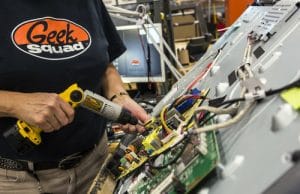
But before we get to the central theme of this post which is basically a short list of the most popular & best laptops for writers.
Let me say one thing:
It’s much better than asking the smooth talking salesman who’ll be more happy to lead you into buying anything, especially if you glanced over the most expensive laptop.
Recommended Specs for Writers
Expensive, as you’ll find out soon, does not necessarily translate to great keyboards and awesome displays.
Which are the only two things you want to focus on.
Wait What?! What about CPU, RAM , storage? Yeah, uhmm, speed? Vroom vroom…

True, buying a good laptop is more than just getting a nice keyboard and a nice display.
However, as of 2024, virtually every 13”-17” released within the past 5 years is capable of running a word editor, +50 web browsing tab and several other everyday other software simultaneously.
I’ll give you a small guideline and a few tips on hardware anyways. This is going to be a summary but you can find more details in the last section.
Keyboard
If you don’t understand some things I’m going to say here (travel distance, chiclet keyboards, etc), then head to the last section.
- All Apple laptops have great keyboards. (Except for some 2018-2019 models. We’ll go over those soon)
- Lenovo ThinkPads have good keyboards with the T series coming on top.
- Windows ultrabooks USUALLY have GOOD keyboards. (LG Gram keyboard is awful).
- 13-15” regular laptops under 700 are a mixed bag. Read reviews carefully.
- Thin budget laptops below 500$ usually have OKAY keyboards. Research!!!
- 17” Windows Laptops do not necessarily have great keyboards just because they’re big.
- ChromeBooks have DECENT keyboards (they’re clicky + they have a lot of travel distance)
Most laptops over 600$ have a backlit keyboard. (Double check)
Very few laptops under 400 will have a backlit keyboard.
Display
13”:This is the perfect balance between portability, display size, weight and keyboard size.
11”: You compromise a lot of screen space here but they’re super portable (~2.2lbs). ChromeBooks & MacBooks should be your only options.
15” Heavy but they have a full sized keyboard and more space than you’ll ever need.
QHD(2.5k) vs FHD(1080p): These are resolutions. The higher the resolution the bigger your workspace area. FHD is ideal but having QHD is a HUGE bonus and worth the extra cost.
RAM
4GB: Not enough for the full version of Windows 10/11/12. You’ll lag even with just notepad open. This is okay for MacBooks, ChromeBooks and Windows 10 in S mode.
8GB: Perfect for multitasking with Windows Home or Pro.
CPU
Chrome OS/OSX (MacBooks)/Linux/Windows in S Mode run fast with any CPU.
Windows Home/Pro does not run well with the following CPUs:
The following are ideal for Windows Home/Pro:
Storage
Virtually every laptop released in the past years has an SSD(Solid State Drive) for storage.
This is good! SSDs will make any run in turbo mode. Every task from booting up your machine to finding a particular word across the entire computer will be completed in seconds.
Top 5 Best Laptops For Writers
The following laptops are mostly going to be either ultrabooks or premium laptops that have a high resolution display and a top of the line keyboard. I will only include ONE cheap option here (last laptop). If you want more ‘cheaper’ options that are portable check my post on 11 inch laptops.
The following reviews are going to be somewhat long but make no mistake: I’m not going to regurgitate specs like most websites do. I’m going to give you very IMPORTANT information that will help you get the best bang for your buck and also give you some alternatives to featured model.
1. MacBook Air M3 Chip
Best Mac Laptop For Writing
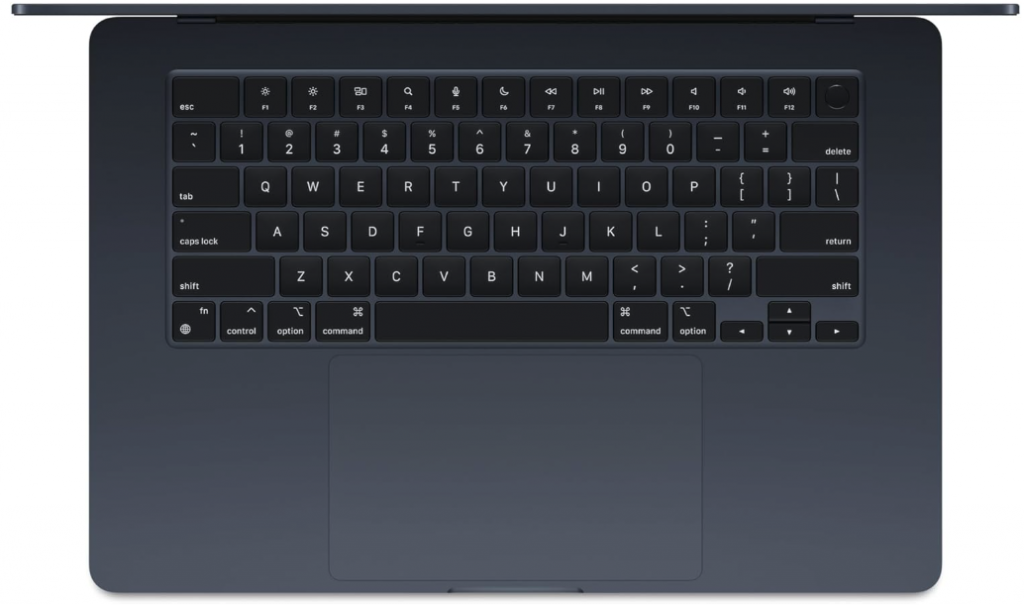
Apple M3 Chip
8GB RAM DDR4
Apple 8-core GPU
256-512GB Flash Storage SSD
13.3” Retina Display (2560 x 1600)
2.8 lbs
15 hours
WiFi 6
The main ordeal of finding the best laptop for writers it to find the holy trinity all packed into one: ultra portability, insane battery life and of course a top of the line keyboard…
…at a low price.
Usually, you’ll only find the holy trinity in thin ultrabooks ( ASUS ZenBook, the Dell XPS 13, the Surface Pro, Lenovo X-Carbon we’ll talk about these soon)
In this realm of thin ultrabooks, the king in 2024, is still the MacBook Air. Though it’s not as portable as the Surface Pro or LG Gram, it’s still very lightweight compared to the average laptop. More importantly the keyboard is on a whole different level: there’s no comparison.
The problem is the price!
The latest M3 MacBook Air starts at 1000 dollars. This is not as expensive as the recent MacBook Pros which start at 1400 dollars.
Luckly for us writers, there’s no need to consider the latest M3 MacBook Pro models. We just want the ergonomics and aesthetics so the lowest configuration of the MacBook Air works for all of us!
In fact….
We’ll talk about this in depth soon but first let me address what you’re thinking:
Q: Why spend that much on a MacBook Air? Or even going for older models? Is that much better compared to the cheaper ultrabooks?
Apple places utmost importance on their keyboards and ergonomics. In fact, I dare say they prioritize ergonomics and design over hardware.
This approach is opposite to that of most companies, which tend to prioritize hardware components such as CPU, RAM, and GPU before focusing on keyboards, displays, and batteries. Many even leave keyboard design to chance after addressing the hardware aspects of their laptops.
This strategy is quite valid, as most companies target gamers and users of high-end hardware.
In contrast, Apple targets programmers, writers, artists, and students.
UltraBooks: A Writer’s first Choice
Of course…
Some companies do focus on ergonomics as much as hardware or even more so. These are called ‘ultrabooks’.
Although these ultrabooks are very very good in terms of design & ergonomics. I have yet to find one that resembles the keyboards & overall design of the MacBook Air (including the OSX which is tailored for creative work).
Today’s ultrabooks, however, have come a LOONG way and their batteries are now quiet close to the MacBook Air (13-15 hours+). However, Apple will always have theupper hand since they’re the company behind their own OS (operating system). Apple can tailor the software & operating system to EFFICIENTLY run the hardware they themselves designed!
Microsoft (company behind Windows) doesn’t design the CPU or the GPU , RAM. Different manufacturers do so it’s less efficient at using energy.
What authors say:
If my word is not good enough.
Check out what famous authors have to say about the MacBook Air. Even King users a MacBook.
In fact, the author of the best selling book on Amazon ALSO uses a MacBook Air too.
We could spend days listing all the authors that use it but why don’t we discuss more in depth why the MacBook Air STILL has this god-like status among writers.
Keyboard
Most MacBook Airs and MacBook Pros have what you call a low-travel island type keyboard.
Low travel keys that are both responsive and clicky are very difficult to design because there isn’t enough space so most laptops with low travel keys do not have that satisfying bounce or that nice tactile feedback.
MacBooks have worked on this since they were first released and it was in 2008 where they had it close to perfection.
You will definitely be able to hit your fastest typing speed with most of their models.
Now there are a few models that do not have such a great keyboard and that’s because Apple decided to change the keyboard design Steeve Jobs took part in but reverted back to the original after customer disatisfaction. We’ll discuss which models are specifically those later but know that the M3 and the M2 & M1 MacBooks still keep the original design.
Portability
Since the release of the first MacBook Air in 2008, its most attractive quality has been the form factor.
It’s as thin as paper which makes it very easy to fit into backpacks, purses or even those thin evenlopes you use to store important documents.
Now…
There are definitely slightly lighter laptops (some models of the ASUS ZenBook & Surface Pro are lighter ) but they won’t have the exact same weight distribution and thinness. These latter two features are what makes the MacBook Air so easy to carry around with just one hand. It feel like carrying a thin piece of metal.
Battery
As of 2024, the latest version of the MacBook Air has the M3 chip and the longest battery (along with the M2 MacBook Air) which is approx. 18 hours.
This isn’t limited to the latest models but the older models too.
I remember using a 2015 MacBook Air on 14-hour flight in 2019 (just for watching movies) and I still had some juice left after the trip. It should be 2-3 hours shorter if you spend all that time writing.
Then there’s also the 2008 MacBook Air I got when I was in college which I remember lasting about two consecutive days without recharge (I had forgotten the adapter and it was finals time so I had no time to go back home).
Below a summary of battery lives of MacBooks throughout the years:
Pre-2017 models: Since there aren’t new models, they will be limited to 10 hours on average. Some may have even 13 hours if the battery’s been replaced.
2018-2019: battery life is not as great due to the introduction of the retina displays and touch IDs ~10 hours.
2020: The first Apple silicon Chip on a MacBook Air was released (m1). The M1 is very very efficient at saving energy. This bumped up the battery to ~15 hours.
2022: The 2022 M2 MacBook Air was released which bumped the battery life to 18 hours.
2024: The 2024 M3 MacBook Air was released last week and so far Apple has states it also reaches up to 18 hours.
| MacBook Air | Advertised | Tested |
| 2015 | 12h | 9-10 |
| 2017 | 12h | 8-10 |
| 2018 | 12h | 10-12 |
| 2019 | 12h | 9-12 |
| 2020(M1) | 15h | 12 |
| 2022(M2) | 18h | 15h |
| 2024(M3) | 18 | 15h |
Display
The M3 MacBook features as well the MacBooks with Apple Silicon Chips (M1 & M2) have approximately 2x the resolution of FHD. A brief summary of the resolution of the 2024 M3 MacBook Air and past MacBook Airs are shown below:
| MacBook Air | Size | Resolution |
| 2015 | 13.3” | 1440 x 900 (HD+) |
| 2017 | 13.3” | 1440 x 900 (HD+) |
| 2018 | 13.3” | 2560 x 1600 (retina) |
| 2019 | 13.3” | 2560 x 1600 (retina) |
| 2020 | 13.3” | 2560 x 1600 (retina) |
| 2021(M1) | 13.3” | 2560 x 1600 (retina) |
| 2023(M2) | 15” | 2880×1864 (retina) |
| 2o24(M3) | 15” | 2,880 x 1,864 (retina) |
Brightness of the recent MacBook Airs are 500 nits and what this means is that you can use them out in the park with the sun over it and you’ll still be able to see what’s on the screen. There’s also True tone which will map the colors & brightness according to the environment. This is onl available on MacBooks post 2019.
Which one to Buy: M1,M2,M3 MacBook Airs or Older MacBook Airs?
It’s really all about what your budget is. Below’s a video of the Apple Silicon Chip models vs the original MacBook Air.
If you decide to go for the older models here’s a basic summar yof the difference between these:
2008-2017 Models
I’ve personally have gotten my hands on the 2008, 2015 and 2017 models. I’ve skipped the 2018-2019 models for reasons I will explain later.
The advantage of these earlier models (2008-2017) is that they kept the exact same design Steeve Jobs had in mind. Although they may not have the best displays, they have by far the best keyboards and the best form factors.
If you get the chances to use the Newest 2020-2024 Models, you’ll find just as equally good at least for writing purposes because it is based on the butterfly mechanism.
2018-2019 Models
Somewhere around this time Apple reintroduced the MacBook Air with a new design and that design took a long steer from the original design. The new design also changed the keyboard, the so called “butterfly keyboard’
These models introduced the touch-ID and a retina display so if you find a model that’s old and has a retina display THAT DOESNT HAVE THE NEW M1,M2 & M3 CHIPS, it is likely to be these models with the new keyboard design. The keyboard itself isn’t bad but the models outside this period ( scissor mechanism) have way better keyboards.
The advantage of these models is that you’ll get a very nice display with lots of screen space at a much cheaper price than the Apple Silicon Models (M1,M2,M3).
2020-2024 Model:
These are the latest which introduced hardware that’s way faster and more powerful. For writing purposes, these are going to be the BEST models out of the entire Apple MacBook Air Series because:
- They have RETINA DISPLAYS (High resolution)
- They have 13 & 15” Models with Retina Displays
- They have the longest batteries (15-18h)
- More importantly, their keyboards are based on the scissor mechanism which are by far the best keyboard design on MacBooks.
Refurbished MacBook Airs:
If you decide to buy MacBooks pre 2020. You aren’t likely to find brand new models. Most of them will be refurbished.
I normally wouldn’t advice anyone to buy a refurbished laptop but we are talking about Apple here. Their products are designed to last at least a decade so they aren’t likely to give you any issues for several several years after purchase.
I have 3 MacBooks (different models) which I bought as refurbished and they’re all still working fine. They even support updates to the system software (up to the latest OSX macOS 14 – Sonoma).
These laptops also go through a control process to make sure they behave like new laptops PLUS you also get a 90 day warranty which is plenty of time to find out if there’s anything wrong with the unit you’ve got.
The prices range from 500-900$ depending on how much power/storage you want. But again, any configuration will be fine.
Older MacBook Pros (pre-2019):
If you want a much higher resolution display on top of the battery life + top of the line keyboard on the older models. Try buying a MacBook Pro, it’s not as portable as the MacBook Air but you’ll have the retina resolution PLUS the scissor switches on the keyboard. They’re a good alternative to the newest MacBook Airs because you’ll get both: huge display with high resolution + top of the line keyboard. You’ll sacrifice battery (limited to less than 10 hours if the battery’s replaced) and some portability however (3.5lbs vs 3lbs).
2. ASUS ZenBook 15
Best PC Laptop for Writers
AMD Ryzen 5 7535U
 16GB RAM DDR4
16GB RAM DDR4
Intel Iris Plus Graphics
512GB SSD
15” FHD IPS
3.09 lbs
11 hours
WiFi 6
The ASUS ZenBooks are a series of portable thin laptops and depending on the model they may be 400-500 dollars cheaper than the newest MacBook Air.
Just like the MacBook Air, they also have the holy trinity: portability, keyboard & battery.
You could say they’re a cheaper windows alternative to the MacBook Air.
Hardware & Performance
What hardware you get depends on the model. The latest models have a 13th gen Intel Core CPU (the latest) or a 7th gen Ryzen CPU (the latest from AMD). For writing purposes, the hardware doesn’t matter. As long as you get 8GB RAM and a Solid State Drive, performance is going to be smooth (all ZenBook models have an SSD + 8GB RAM even the older models).
Display
The display on this model only has FHD resolution which is basically half the resolution of QHD displays (QHD is similar to the MacBook’s retina display). This is what makes it so cheap (under 600).
However, you can buy an ASUS ZenBook with the QHD resolution as shown below:
| ASUS | Size | Resolution | Battery |
| ZenBook 15 | 16” | FHD (1920×1080) | 13 hours |
| ZenBook 15 OLED | 15” | QHD (2880 x 1800) | 13 hours |
| ZenBook 14X | 13.3” | QHD (2880×1800) | 11 hours |
Basically turning into a MacBook Air that has Windows on it. Of course, the price gets closer and closer to 1000 dollars (MacBook Air Price) if you add the QHD display.
The ASUS ZenBook 14X is about 800 dollars and has the QHD display, portable and decent keyboard but you have to give up the battery because QHD resolution consumes more energy (11 hours) and thinness (it’s somewhat thicker). The ZenBook 15 OLED consumes less energy and has a QHD resolution but it’s close to 1000 dollars.
ASUS ZenBook Duo Models
Its nice to have the extra display but most writers just want a simple set up that can bring out motivation and inspiration. Having two displays on the same laptop can be bothersome and distractive. Nothing better than a plain simple display you can write on full screen mode.
Well it’s really up to you but the ASUS ZenBook Duo models are MORE expensive and have way more POWER which is unncessary for writing purposes.
Keyboard
ASUS ZenBook Trackpads are nowhere near as good as the MacBook Air. However, that shouldn’t be a concern since any writer that wants to be productive NEEDS to use a mouse UNLESS they’re working on cramped placed like in the BUS or TRAIN.
As for the keyboard, the ASUS ZenBook models do not have the best keyboards like the MacBook Air but they’re quiet better than what you find on most windows laptops. You are not going to have to press hard to get a responsive and a fast workflow when typing. They’re not loud either and travel distance is low too.
Most models like the one featured here have a backlit keyboard too.
Older models may have some of the keys unconventially placed but the newest models follow the same keyboard pattern most people are used.
Numerical Keypad:
Unlike the MacBook Air, many of the ASUS ZenBook models have a numerical keypad. The ASUS ZenBook 15 here has a physical numerical keypad on the right side. Whereas the ASUS ZenBook 14X has numpad placed on TOP of the trackpad. It doesn’t have buttons , it just makes sections of the trackpad sensitive to a specific number.
3. Surface Pro 9
Best 2 in 1 Laptop For Writers
Intel® Evo Platform Core™ i5/i7
8GB-32GB RAM
Intel Xe Graphics
128GB-1TB PCIe NVMe SSD
13” IPS 2880 x 1920
1.96lbs
+10 hours
WiFi 6
The ASUS ZenBooks are not the ONLY ‘premium quality’ ultrabooks on windows. Microsoft has released several devices aimed to have the same qualities: portability, battery & keyboard.
Now…
Out of ALL the Surface Devices, you want to look after the Surface Pro, the Surface Studio or Surface Go. The rest (Book & Laptop Studio) have unncessary extra hardware (graphics cards and high-tier CPU) that consume too much power thus reduces battery life significantly.
As for the Surface Go, Surface Pro and Surface Studio all of them are good for writing purposes, they have good keyboards, they’re portable and have insane battery lives.
| Microsoft | Size | Resolution | Battery |
| Surface Go 2 | 10.5” | FHD (1920×1080) | 10 hours |
| Surface Laptop 2 | 13-15” | QHD (2256×1504) | 14 hours |
| Surface Pro 9 | 13.3” | QHD (2880×1800) | 15 hours |
The most portable one is the Surface Go which is 10.5 inch and 1.2lbs.
In this Review We’ll focus on the Surface Pro which is 2lbs and 13”.
Performance
None of the Surface Pro models lack performance for heavy multitasking like those small 11 inch notebooks under 300. They can all run, even the older versions, Windows Home or Pro plenty fast to be productive.
Now if you’re going for the older models because they’re cheaper be sure to get at least a Core i5 + 8GB RAM.
The newest models don’t have this option, the Surface Pro 9 only come with a Core i7 and 16GB RAM which makes it FASTER than the ASUS ZenBook and quiet close to the older Apple Silicon MacBooks. Of course, this only matters if you do creative work like videos or image work.
Display & Design
The Surface Pro is designed to act as a tablet you can write/draw/take notes on and as a laptop.
The note-taking feature is just as accurate and as sensitive as an iPad which is already close to a physical notebook. Of course it takes some time to get used to.
The laptop mode is having the keyboard attached to bottom hinge. Yes, keyboard’s detachable, there’s no flipping back. The bad news is that the keyboard and pen is sold separately. So unless you have 100$ to spare, you’re not going to find it useful very useful as it is. We all know on-screen touch keyboards aren’t nearly as good as a physical ones.
The current Surface Pro 9 has a 13” display and a QHD resolution. The display will basically feel like the 13 inch version of the MacBook Air as far as screen space is concerned. Multitasking will STILL be easy sinice the resolution adds a massive amount of extra space.
Now this isn’t true for all Surfaces Devices, the Surface Go, which is a smaller & more portable version of the Surface Pro has a 10.5” display with FHD resolution. These specs will limit multitasking (with windows next to each other) and only be good enough to work with one window at a time. So if you’re a writer that wants something very very portable and don’t need inspiration other than the blank screen from a word editor, you want the Surface Go.
Buying Surface Laptop + Surface Go:
You could, if you have the cash, buy both. The larger Surface laptop has a high resolution (QHD) and large display (15”) which is perfect for home/office use. Basically your main device for writing.
Then use the Surface Go as a secondary device you can take with you anywhere you and use it anytime inspiration strikes.
Keyboard: Stability?
The keyboard size isn’t a problem. Since the Surface Pro and Surface Laptop Studio are 13”-15”, this means making full sized keyboard with big keys and well separated keys is easy. The Surface Go’s keyboard however feels a bit cramped since it’s 10.5” device.
There’s one issue with the Surface Pro 9’s keyboard and that’s stability. It is stable and sturdy when you have the keyboard sitting on a hard surface but it will be a bit flimsy if you have the keyboard placed on your lap. If you’re a writer that likes type on their laptop, you want to opt for the Surface Laptop. The latest Surface Pro 9 does a better job at minimizing this instability as opposed to its earlier versions.
4. ASUS Chromebook C202SA
Best ChromeBook For Writers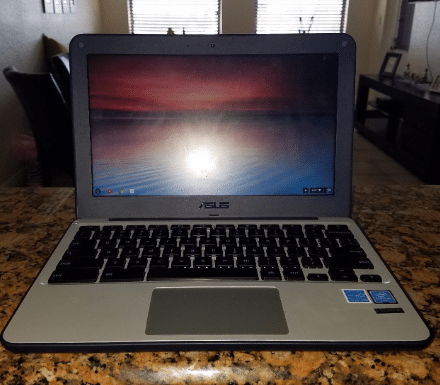
Intel Celeron N3060 1.6-2.48 GHz
4GB RAM DDR3L
Intel HD
32 GB eMMC
11.6 inch HD Anti Glare
2.2lbs
10 hours
Chrome OS
x2 USB 3.2 Gen 1 ; 1 x HDMI; 1 x Headphone/microphone combo jack x1 SD Card Reader
 So far we’ve gone over premium thus expensive laptops. The next two laptops are going to be MUCH cheaper.
So far we’ve gone over premium thus expensive laptops. The next two laptops are going to be MUCH cheaper.
ChromeBooks:
We’ll start with ChromeBooks which are VERY portable , have great batteries and are much cheaper!
How cheap? You can find them as low as 200 dollars BRAND NEW. Yes, BRAND NEW!
So you can buy FOUR ChromeBooks for the price of an ultrabooks and they STILL have +10 hours bateries weighing less than 3lbs on average.
So what’s the caveat? Actually there are several cavets but you can work your way around them.
Hardware
If you know a thing or two about computers you will notice that the CPU on ChromeBooks have weird names (no Intel or AMD Ryzen labels!).
Your suspicion is not wrong, the CPU is slow and old. However, they do not run on Windows so they don’t need to use Intel or Ryzen CPUs to run fast. They run on Chrome OS and this is a much lightweight operating system.
Chrome OS is just as lightweight as the operating on tablets (iOS & Android) so they don’t need much power to run fast.
Performance
The CPU & hardware on Chromebooks can run light tasks like web browsing, typing, programming , watching videos, word editing, light photo editing, etc, plenty fast.
This is perfect if you are writer because you need to do nothing more than the above. Even if you’re thinking about multitasking with the above software virtually every ChromeBook can do it. Think about your phone and how fast it is to switch between applications.
Third party software:
Chrome OS won’t let you install third-party software you find online (which are mostly viruses and games anyway) so they’re basically designed for actual work.
Q: So I can’t install the software I have on my current computer?
If you mean installign software through .exe file, then no.
However, you can install the usual stuff most people use through the Chrome App Store (most of which is free).
Excel, Office, Zoom, several word-editors, are all available for you to install.
Basically any software “MAINSTREAM” software that’s on your phone has a version that works for ChromeBooks.
Chrome Web Browsing with lots of Web Tabs:
Since Chrome (the web browser) is made by the same company who designed ChromeBooks. Web Browsing is going to be fast even if you have a ChromeBook with low RAM. I remember having 25 tabs open with a 2GB RAM ChromeBook and still felt no lag when alt+tabbing between these.
Q: What other software is available on Chrome OS?
Lightroom, PhotoShop, Word,Excel, PowerPoint, are all available free of charge, along thousands of other games and software.
If you wanted to install third party word editors you can find them on the Chrome App Store. Now that doesn’t mean you’ll get the same amount of options in software as a Windows Machine. You’ll still be limited but you’re a writer, what else can you need?
If you need more software, there’s another HACK to get lots of free software on a ChromeBook:
Installing Linux
Yes, you can install a Linux distro on a ChromeBook. If you do this, a ChromeBook will be basically turned into a full blown OS for you to download and install thousands of other third party software from the web just like you would with a Windows laptop.
You don’t have to delete Chrome OS, you can have both Operating Systems on the same machine and switch between these as you please.
Design
Chromebooks are generally THICK (about 1 inch) which is TWICE as thick as the MacBook Air but they’re portable (weigh no more than 3lbs). The displays are low resolution and mostly limited to 11” or in rare cases 13” (these are more expensive).
The ASUS ChromeBook C202SA featured here is .9 inches thick (2.2cm) and 11.6 inches measured diagonally. The display is smaller than that because the hingers are thick and take up a lot of space. Weight is 2.2lbs which is SLIGHTLY above average for an 11 inch ChromeBook.
Note that the weigh still MUCH lighter than the MacBook Air and quiet close to the Surface Pro and yet this is still above average for a 11 inch ChromeBook, the reason behind this is the chasis.
Ruggedized Chasis
The description may say “military grade” design but it doesn’t mean they have tested bombs close to it.
It means the rubberbands all around the top cover and corner gives it extra protection from drops and accidents.
I’ve personally dropped it a few times (I throw this to my bed) and had no visible dents.
Battery: 10 hours
Why is it that every ChromeBook has so much battery?
It’s just like your phone. It doesn’t have high-tier hardware that consumes lots of power & the operating system is lightweight. You are not running power hungry background processes or software either.
This is why on average most chromebooks will have 10 HOURS. This works PERFECT if you are a writer because you are limited to simple tasks and writing.
Keyboards
Chromebook’s keyboard , including this model’s, are cheap. They are made out of plastic and the design is pretty simple. It’s the old traditional keyboard design most laptops use (no scissor or butterfly switches).
However, that doesn’t make them bad. You may have to be press down a bit further but they’re still responsive enough to have a quick workflow. Since ChromeBooks are very thick, there’s plenty of space for high-travel and plenty of space NOT to mess up the keyboard design (like a full blown separate keyboard).
Of course, there are chromebooks that are thin, have an aluminum chasis with a better keyboard (which may have a backlit feature + fingerprint reader) but the prices start getting close to 500 and the whole point here is to save money.
ASUS ChromeBook C202SA
I only use this model to write in places where there’s a chance of physical damage to my backpack but everytime I’ve used this model. The tactile feedback is superb. It almost feel like a mechanical type writer because you can hear the keys bang loudly when you type.
It’s at least definitely better than the keyboards on most windows laptops which have low travel and are not responsive enough for a quick workflow.
Gaming Laptop Keyboard vs ChromeBook’s Keyboard
It even beat the keyboards on gaming laptops I used in the past. I had a 17 inch gaming laptop (Acer Aspire) which stopped working due to overheating after a year.
It was one of those Acer Aspire models with a dedicated graphics card (it stopped working after a year ). The keyboard was awful (very low travel distance keys with little response). You would think the fact that it’s a thick gaming laptop would assure you the keyboard was decent. No!
It didn’t make it impossible to write but it sure made it pretty uncomfortable. It got to the point that I actually had to attach an external keyboard to make it through the day. Of course this isn’t true for every gaming laptop.
Why do you even use a ChromeBook anyway? Don’t you have a MacBook Air already?
Just like you I am a writer by passion and I try to write short stories whenever I think I won’t have enough time to add good material to my main novel.
That’s all I do on laptops, write write and write even the size of these reviews are reflective of what I mean when I say I write a lot. I also have colleagues hating me for my long texts & emails too.
That’s why I own a ChromeBook as a back-up machine, there are a few instances where I know I can’t bring my MacBook Air with me.
I also bring it to places where I know there’s a good chance I won’t find an outlet to recharge.
Sometimes I even bring both the MacBook Air and this ChromeBook to make sure I never run out of juice on a trip.
5. Lenovo IdeaPad 1
Cheap Laptop For Writers
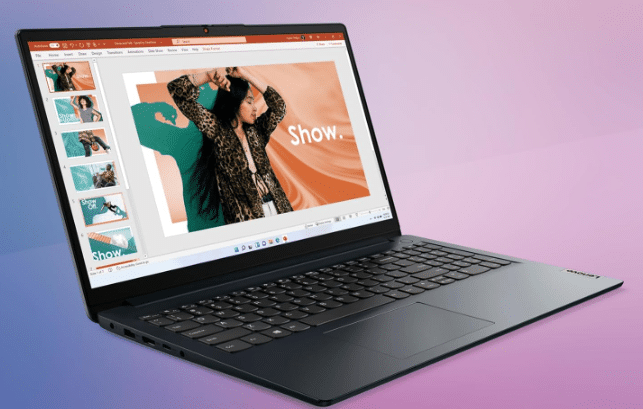
AMD Ryzen 3 7320U
8GB LPDDR5
AMD Radeon 610M
256GB SSD
15” full HD IPS
3.5lbs
8 hours
Wifi 6
This is the CHEAPEST laptop for writing with the best bang for your buck. For 300 dollars, you’ll get:
- FHD Display
- Latest Ryzen 3 CPU
- 8GB RAM
- SSD
- WiFi 6
- 8 hours battery
And to top it off , it only weighs 3.5 lbs despite being a 15” laptop!
Hardware
The hardware surely isn’t the fastest but it’s still the latest. The Ryzen 3 is the weakest CPU of the Ryzen series but it’s still fast enough for multitasking and do even heavy work with photo or video editing (though rendering will take longer).
The Ryzen 3 is NOT a CPU that’s used on ChromeBooks, tablets or 2 in 1 laptops. Windows 11 and even Windows 12 will run plenty fast as long as you get 8GB RAM.
Performance
Windows 10 S mode vs Windows 12 Home:
This last point is very very important when you are on a budget because it is in this price range where you’ll more likely to come across laptops with 4GB RAM.
That much RAM , regardless of how fast the CPU is, is NOT going to make Windows Home or Pro run efficiently. You will lag!
This is why I picked the Lenovo Ideapad 1. It has 8GB RAM! It may be a little on the heavy side (3.5lb) but it’s a sacrifice you must make to run Windows 12 FAST.
Cheaper laptops will come with 4GB RAM and although it’s true you can update them. If they’re very lightweight, it is likely they don’t have an extra RAM slot for upgrades so you’ll be stuck with 4GB RAM.
However, 4GB RAM laptops CAN be an alternative to the Lenovo Ideapad 1 IF you are willing to ditch the full versions of Windows for Windows in S mode.
Windows in S Mode
This is basically an operating system that resembles Chrome OS both in how much hardware it needs to run and what software you are limited to (basically anything that’s on the Windows App Store).
All laptops with Windows 10 in S mode can be switched out of it and have Windows Home though. The problem is going to be RAM. Windows in S mode itself isn’t bad because the most popular writing software are available on the Windows App store. For example: EverNote,OneNote,Word,WordPad,Google Docs,etc, are all there, along with the most used apps like Chrome , Zoom, Office and so on.
Keyboard
The keyboard is a big problem with laptops around this price range. This one doesn’t have a great keyboard.
But you can make do, it won’t ruin your workflow.
The keyboard is well distributed across the base. Keys are well spaced and big enough. It includes a numerical keypad.
The keys have low travel distance but they’re responsive enough.
The keys are NOT backlit though.
Honorable Mentions
The way I narrowed it down to 5 laptops was by:
- Reading dozens of reviews and comments from several different websites (LaptopMag,NoteBookCheck, Amazon,eBay) of what I thought could possible have good keyboards (using the guidelines I described).
- Asking Amazon to send me these models (of course I had to pay).
- Tested the keyboard and display by using Scrivener
- After that I either sold them or gave them away .
Obviously there are still several models that also have a great keyboard, are snappy, have a decent display and of course have ultra long battery life (I would say there are about 10 more models).
Out of these, only 2 deserve an “honorable mention”:
- The 15” Lenovo Ideapad 5i Pro with the QHD resolution: great keyboard, VERY good display and decent battery life (5 hours) however it’s relatively big : 15” and a little heavy: 4lbs. It’s good if you’re mostl work at an office or do your writing in one single place.
- 11” Ultra thin ASUS L210: Which is the laptop on the image above doesn’t have a top of the line keyboard but it does have a great battery and it’s quite snappy (provided you only use Windows 10 in S mode). The best part is that it’s just as thin and light as an 11inch MacBook Air. It’s a great alternative if you do not like Apple and would rather stay with Windows machines that are NEW and not refurbished.
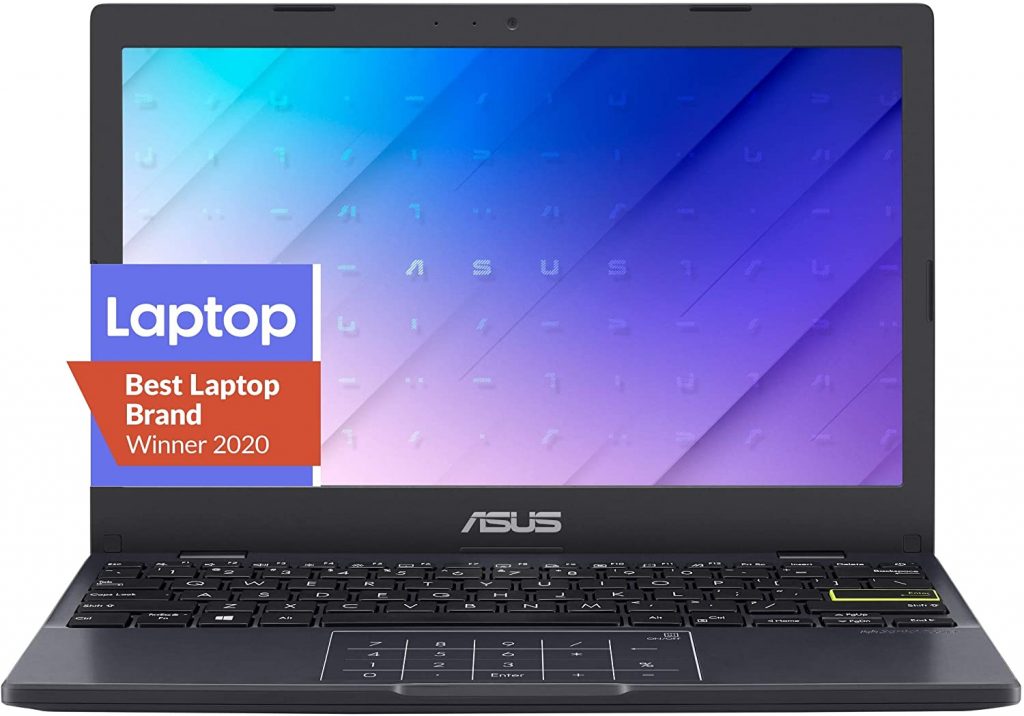
How to Buy The Best Laptop For Writers
We all know even the weakest and most oudated laptop can handle a word editing software and an internet browser. So for writers, it’s all down to ergonomics especially the keyboard.
Keyboard
Most laptops have decent keyboard to type on and do any kind of work but only a few will let you hit your fastest typing speeds.
The gap between the keyboard quality of the MacBook and the Lenovo Ideapad 1 is HUGE but it doesn’t make the Ideapad 1 useless.
You can write a novel on both of these laptops no problem but it’s much more of a joy to do so in a very clicky and responsive keyboard such as the MacBook Air’s.
If you want to maximize your chances to get a very sensitive & responsive keyboard with a low budget you must learn what travel distance is.
Travel Distance

Travel distance is how far a key can travel down when pressed to register a character.
It’s much easier to make a good keyboard if you have lots of space for a high travel distance but it isn’t easy to do this on laptops.
High Travel Distance: Thicker laptops such as those gaming laptops will have enough space to allow more vertical travel (since they need to be thick enough to allow for more ventilation and powerful hardware).
So basically any 15-17” laptop that’s thick enough will make sure the keyboard is at least decent.
Low Travel Distance: It’s very difficult to design thin laptops with keyboards (that will inherently have low traveling distance) that are both clicky and bouncy. If you hear about a budget laptop (a heavy +4lbs that’s 15 inch diagonally) with low travel distance keys, chances are that they will be not as responsive as you’d like them to be. This might make long hours of typing a challenge and in some cases even too distracting to keep going.
Usually, low travel distance keyboards that are clickly and responsive will be found on expensive ultrabooks . They are expensive for a reason : great care has been taken into the overall design.
Noise
I remember sitting at starbucks and there was this guy pounding hard on his keyboard.
Apparently, he wanted to show everyone that he was doing actual work and not playing games or chatting like everyone else. Or maybe he was a type-writer in the past and recently got a laptop.
Or maybe that was just his style. He wanted to sound like Ernest Hemingway on a typerwriter (believe me some writers do). For those of you who want to make as much noise without having to pound hard on a keyboard, then high travel distance keyboards will be of your style.
On the other hand, if you want to make as little noise as possible, low travel keyboards will be more of your style. Some ultrabooks are almost silent when typing (MacBooks).
Layout

Island vs Convential Type
What they do differ on however is how much space there is around each key.
Island types will have more space(hence the name).
The picture you see is of the MacBook Air’s keyboard which has always been of the island type.
Like I said, it’s just a matter of preference and aesthetics, I have laptops with either type and I can hit my fastest typing speeds on either. Most laptops now however have keyboards of the island type.
BackLit Feature
This is super useful if you’re one of those who think that “inspiration can strike anywhere and any time”. If it happens in a dark place with no light (taxi,train, forest,etc)…then you want a backlit feature.
Some writers even go as far as carrying a bluetooth keyboard that has a backlit feature to attach to their phone.
Backlit keys are universal on ultrabooks but they are not limited to ultrabooks. You can also find them on any laptop (budget laptop or not). You just need to double check.
Brightness

Some laptops have a very cool feature on top of their baclit keyboards: you can control how much bright the keys can be lit. This is helpful for battery saving purposes. This is mostly found on premium ultrabooks though, not something you can find on any laptop with a backlit keybaord.
Size
Obviously, bigger keyboards are always better but this isn’t ideal if you want a portable device.
All I have to say here is that your primary machines should not go below 13”. Small laptops have keyboards that are too cramped making them difficult to type accurately.
Any laptop equal or above 13” measured diagonally will have a full sized keyboard. Although 13” laptops will discard the numerical keypad, all the other keys have approx. the same size of 15” and 17” laptops.
How about 11” laptops?
It’s a matter of preference but how good you can type on these depends on the overall quality of your laptop.
If you need a laptop this small, I would advice you to invest on a premium 11” laptop like a MacBook, Surface Go, etc. You’ll need a high quality design to make these keyboards work great in such a small space.
Display
For writing purposes, you only have to look at two specs when looking at displays: Size & resolution.
These two will dictate how much visually cramped you may be.
11”: If you like to have two windows next to each other. You must avoid laptops with 11” displays that have HD or HD+ resolutions.
QHD resolution or higher on 11” screens will give you extra space, then you’ll be able to fit in at most two windows side by side vertically or horizontally.
If you can’t afford 11 inch laptops with FHD/QHD displays then use spaces (MacBooks) or something similar on Windows systems.
13”: This is the perfect size for multitasking and also can fit in a full sized keyboard. If you have a QHD resolution display with it, then you can have at least three windows (strategically positioned) next to each other.
15-17”: These give very very geneous amounts of workspace area if you combine them with a QHD display. As of 2024, QHD displays are not only found on expensive laptops. You can find them below 700 bucks.
Battery Life
ChromeBooks: 99.9% of ChromeBooks have at least 10 hours of battery. The other 0.01% (which have 6-8 hours) are equipped with faster chips like Intel Core CPUs/Ryzen CPUs.
These consume more energy and for most people using a ChromeBook they are unncessarily powerful.
Apple Laptops: All apple laptops have at least ~10 hours of battery. Even the most powerful MacBooks have long batteries.
This is only true for new laptops or at least mac laptops with new batteries (batteries with no cycles).
Refurbished MacBooks will give you around 8 hours unless a brand new battery has been used to replace the old one.
Windows Laptops: Nearly all windows laptops across all price ranges have worse batteries than ChromeBooks or MacBooks.
Unlike ChromeOS and OSX (the operating system of both apple and chromebooks) Windows consumes more energy because they don’t have complete control on the hardware that’s used to run the software (its less efficient).
You will rarely see a windows laptop with +10 hours of battery unless they’re premium ultra books which means they have been specifically designed to accomodate long battery lives.
If you want to get the most battery out of a windows laptop that’s not an ultrabook, get a machine with a Ryzen 3 or a Core i3 CPU. These have the perfect balance between performance and battery life.
Performance
The truth is you don’t really need to worry about storage/graphics cards or CPUs because let’s face it, nearly every laptop will be good for everyday tasks. However, you still need to be aware of a few things if you want to avoid mishaps:
CPU
As you know virtually all CPUs made today has way too much power for the average user.
Of course some CPUs are too slow to even have Windows.
Windows: laptops above 400$ will for the most part (as long as they’re new) carry a CPU fast enough for WIndows 11 and Windows 12.
The problem starts when you look for budget machines below 300$:
-
. As a good rule of thumb, avoid any CPU that says Celeron, Pentium, Atom, Intel Y3,Y5, m3, m5 labels.
- Only opt for Intel Core i3, i5.
- As for AMD CPUs. Avoid any AMD processor that doesn’t have the word “Ryzen”.
ChromeBooks and Apple Laptops: You don’t have to worry about CPU speed when buying either of these . They’ll run fast regardless.
RAM
Likewise, each operating system (Windows 10 S, Windows 10 H) will consume different amounts of RAM.
2GB: This is fine if we are talking about ChromeBooks/ MacBooks. This is also true for Windows 10S. However, for Windows 10 Home and Windows 11 Pro, you need at least 4GB.
4GB: While it is true 4GB will run Windows 11 and Windows 12 . The moment you open more than one program (something other than Office), you’ll start to lag.
4GB is fine for ChromeBooks and MacBooks, not fine for Windows 10/11/12.
8GB: This is the bare-bone minimum amount for Windows 11 Home/ Windows 12 Pro. Anything more is unnecessary.
Storage
Capacity isn’t something to worry about. We all know you can store hundreds of docs on a floppy disk from the 90s.
Even the lowest storage capacity found on laptops can store 128*19200 pages of documents.
What’s more important today is the TYPE of storage.
Solid State Drives and Hard Disk Drives
You want the former because they will do anything that’s related to reading/writing data in split seconds, including:
- Looking up for a particular sentence/word/document through the search bar in one second.
- Booting up your computer and making it ready for work in less than 10 seconds.
SSDs (Solid State Drives) are universal on laptops as of 2024 though.
Back Up
All types of storage are prone to failure which means every single well crafted scene, sentence and idea will be long gone with it.
This is why it’s important you learn how to use a Back-up.
If you opt for a ChromeBook, you don’t have to worry about Back-Ups since everything will be stored in the cloud which is accessible with your gmail account.
If you have a MacBook/Windows laptop, then start using free cloud services for the storage of your most important documents: DropBox, TheCloud,
Comments?
If you have any suggestions or questions . Please let us know in the comments below.
Author Profile
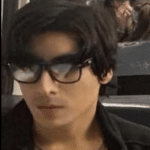
- I am physicist and electrical engineer. My knowledge in computer software and hardware stems for my years spent doing research in optics and photonics devices and running simulations through various programming languages. My goal was to work for the quantum computing research team at IBM but Im now working with Astrophysical Simulations through Python. Most of the science related posts are written by me, the rest have different authors but I edited the final versions to fit the site's format.
Latest entries
-
 Laptops2024.07.09Laptop Storage Type Guide (PCIe NVMe, SATA III, HDD, eMMC)
Laptops2024.07.09Laptop Storage Type Guide (PCIe NVMe, SATA III, HDD, eMMC)
-
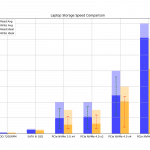 Laptops2024.07.02Laptop Storage Speed Comparison (PCie NVMe 5.0, 4.0, 3.0, SATA III)
Laptops2024.07.02Laptop Storage Speed Comparison (PCie NVMe 5.0, 4.0, 3.0, SATA III)
-
 Hardware Guide2024.06.29Desktop Storage vs Laptop Storage Speed Performance Comparison
Hardware Guide2024.06.29Desktop Storage vs Laptop Storage Speed Performance Comparison
-
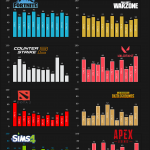 Hardware Guide2024.06.23Single-Thread vs Multi-thread CPU For Gaming (List & Benchmarks)
Hardware Guide2024.06.23Single-Thread vs Multi-thread CPU For Gaming (List & Benchmarks)
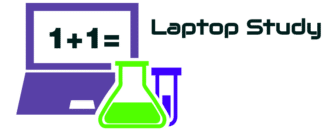
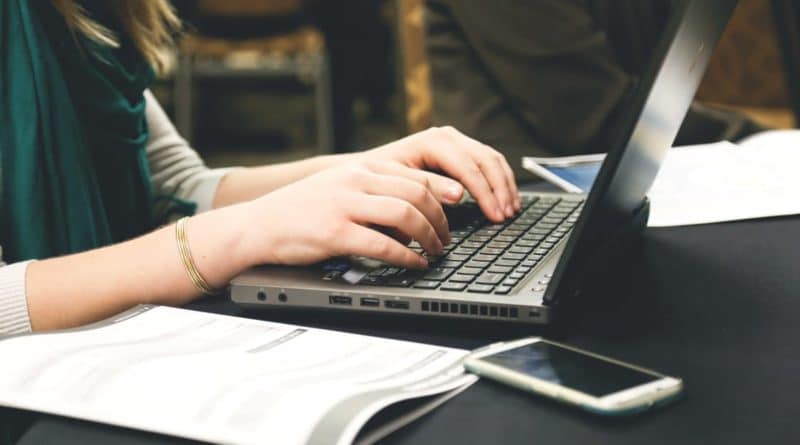



Normally I do not read post on blogs, but I would like to say that this write-up very forced me to try and do so! Your writing style has been surprised me. Thanks, quite nice post.
I just want to mention I am just beginner to weblog and actually enjoyed this website. Probably I’m planning to bookmark your blog post . You amazingly have impressive article content. Kudos for revealing your webpage.
It was a pleasure to read your article. Very educational and clear. Nice style of writing. And funny also. Thank you. I will probably purchase a MacBook Air. And an adapter for Ethernet. I will have to figure that out. I’m coming from Win7 so I will have to learn an entire alien OS. How many back doors does Apple entertain? I was looking for Lenovo X1 Carbon but the screen is too small 16:10. I am a translator of books and need a split screen to have enough space. Thank God MacBook has a 15″ screen. Your tip of a refurbished MacBook is also interesting. Apple makes quality for sure. Your article may have turned my computer life around today… If I’m going to crash, I’ll come back to you, sir.
Hi I didn’t delete your previous comment I just did not approve it, there’s so much spam I had to filter out the comments that came from people. So you’re from the netherlands I was in the netherlands in december lol….maybe you saw me a guy with glasses. I took my macbook pro with me I was in japan for almost a year it’s a 2019 MacBook Pro and still works like a Champ…also my 13” MacBook Air works like new.
When reading this article on Macbook Air I was convinced to abandon MS Wind7 on a Lenovo ThinkPad to adopt an Apple Macbook instead. Two days later I found a Macbook Pro 15″ from 2012 refurbished and the OS Catalina (2019) “Retina” installed including a LAN card and an Ethernet port. I don’t need a strong battery since I work from home and exclusively on cable. So this exceptional model was meant for me. Thanks to your informative and very convincing article I will have an excellent laptop. I’m a translator of books in need of a fast keyboard. By the way, why did you delete my previous comment?
That’s a bit too old if its from 2012….but if its refurbished and from amazon it will surely last you long enough. Indeed this is a complete hack ! Buying refurbished MacBooks is a hack very few people now …maybe I should write an article about it.